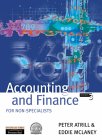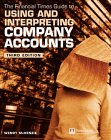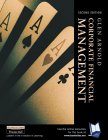
Ian McIsaac
Financial Training and Consultancy
| Home | Services | Learning Centre | Course Schedule | Clients | CV | Contact |
Recommended Books |
||||
| UNDERSTANDING FINANCIAL STATEMENTS | ||||
| Accounting and Finance for non-specialists Written for readers who have not studied finance before and aimed primarily at non-accounting students. This is a comprehensive introduction to the subject with plenty of “activities” and self-assessment questions. Don’t expect too many real-life examples. |
 |
|||

|
Financial
Statements: A Step-by-step... This is recommended for anyone who prefers a more visual approach. It’s very concise and clear – absolutely no wasted words. It is relevant for the entrepreneur or owner manager as well as anyone who needs a basic introduction to finance. The second part of the book takes the reader through the financial reports of a hypothetical company start-up. Note that the examples (and terminology) are American but anyone new to finance can still get a lot from this book. |
|||
| "Financial
Times" Guide to Using and Interpreting Company Accounts.
Expands considerably on the material covered in the Guide to Financial Statements available on this website. It runs through the information to be found in accounts, how accounts are analysed and how this analysis can be applied. Good comprehensive coverage of the topics but some prior knowledge of accounting would be useful as the book is tackling quite complex areas (eg accounting for associates) by page 20. It has an international approach and anticipates the arrival of international reporting standards. There’s no opportunity to test knowledge but there are references to real-life annual reports. |
 |
|||
 |
Interpreting
Company Reports and Accounts An A4 book which was first published back in 1979 and has been constantly updated since. It is densely packed with information with excellent case studies and real-life examples. It is quite technical and the book is not recommended for the beginner. Some of the examples could be explained more clearly – even for the experienced analyst. |
|||
| CORPORATE CREDIT ANALYSIS | ||||
| Fundamentals
of Corporate Credit Analysis This book was published in December 2004. |

|
|||

|
Corporate
Credit Analysis
The book introduces the methods of analysis and provides an overview
of the key areas for analysis including the non-financial factors
as well as cash flows, liquidity and ability to repay. |
|||
| Corporate
Financial Management
The corporate banker needs to understand the many issues facing Treasurers and CFOs in the companies they are lending to. This is a 1,000 page text book – written principally for students and MBAs – but will be useful for anyone wishing to understand the basics of corporate finance. An excellent visual image at the beginning of the book shows all the factors impacting on the firm’s objectives. Each of these is given comprehensive coverage in the book. |
 |
|||